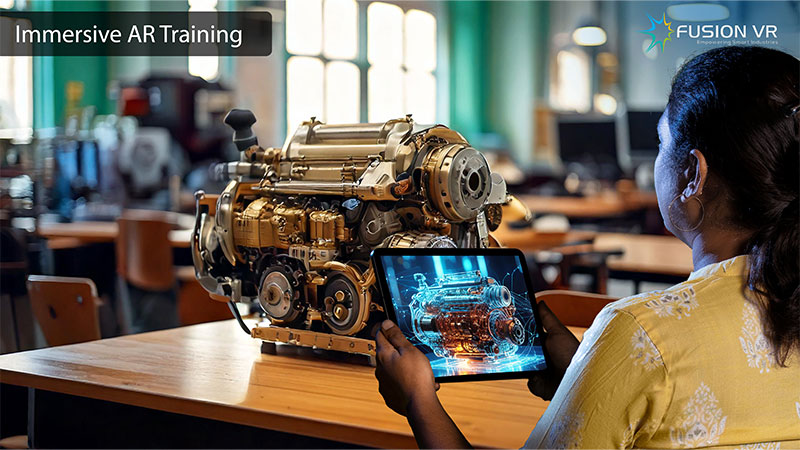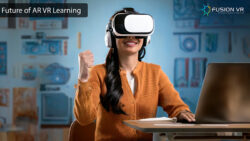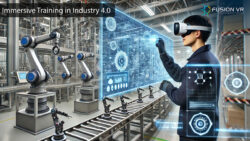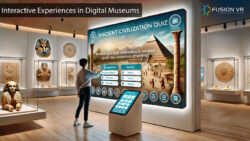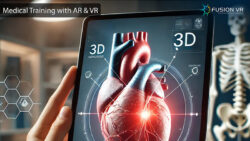Augmented Reality (AR) is revolutionizing how we engage with the digital world by combining physical and virtual elements to create immersive, interactive experiences. AR has applications for a variety of industries, including dramatic advances in gaming and ground-breaking applications in healthcare and education. As corporations and developers strive to capitalize on AR’s potential, there is a growing demand for qualified people with specific trained skillset in AR and VR.
Whether you want to become an augmented reality developer or improve your technical skills, AR training is the way to get into one of the fastest-growing industries in technology. Here’s why enrolling in an augmented reality training course or acquiring an AR VR certification could be the best career investment you can make.
Why Augmented Reality Matters
AR overlays digital content on our physical surroundings, making information more accessible and experiences more engaging. AR is transforming user interaction with everything from interactive museum displays to retail apps that let customers to visualize things in their own homes. However, developing AR applications is not easy; it requires learning everything from 3D modeling and interaction design to complicated code.
Industries are actively looking for personnel with AR skills, and augmented reality courses can help. AR training provides you with hands-on design and development abilities, allowing you to create applications that engage and enlighten people in novel ways.
Key Skills to Learn in Augmented Reality Courses
Specialized AR and VR courses provide systematic help for designing, developing, and deploying augmented reality applications. Here are some essential abilities you will learn:
1. Interaction Design and User Experience (UX).
Interaction design is at the heart of any AR experience. An AR VR training course will educate you on how to design intuitive and compelling interactions for AR environments. Because AR overlays virtual content onto physical environments, interaction design concepts are critical for ensuring that users can easily browse and use these applications.
2. 3D Modeling and Animation
AR is incredibly visual, so 3D modeling is a must-have skill for any augmented reality developer. Learning 3D design and animation enables you to create realistic digital objects that seamlessly integrate into the real world. This knowledge is especially useful in fields such as gaming, where captivating images are required for an immersive experience.
3. Coding and Software Development
Coding is essential to AR development. The courses cover essential programming languages and software platforms, such as Unity and Unreal Engine, which are often used to create AR apps. By mastering these technologies, you will develop the technical skills required to bring complicated AR concepts to life. Furthermore, VR apps are frequently used in training, allowing you to get expertise with immersive technologies in general.
4. Augmented Reality Hardware and Device Integration
Creating AR applications necessitates a grasp of how they interact with various hardware devices such as smartphones, tablets, and smart glasses. Specialized augmented reality courses teach you how to create applications that are tailored for device-specific characteristics, resulting in smoother performance and better user experiences.
5. Industry-Specific Applications of AR
Whether you’re in healthcare, education, or retail, AR courses frequently include industry-specific applications. This course teaches you how to design practical, tailored solutions like AR guidance for surgeons and virtual fitting rooms for online consumers. Tailoring AR skills to industry requirements will help you get a competitive advantage in the job market.
Benefits of AR and VR Training for Your Career
A professional AR VR certification can greatly advance your career by making you more appealing to companies and expanding your job opportunities. Here’s how certification can help:
- Certification validates your expertise in AR and boosts employer confidence.
- Certification opens up career opportunities in AR and VR development, product design, and project management.
- Formal training can provide a competitive advantage in a quickly moving field, allowing you to remain ahead of changing technologies.
Choosing the Right Augmented Reality Training Course
When deciding on an augmented reality training course, evaluate the course curriculum, hands-on projects, and certification value. Here are some tips to help you:
- Choose a training provider who has expertise in developing real-time AR applications for real clients rather than having experience in teaching the concepts alone.
- Look for learning that provides various skills such as interaction design, 3D modeling, and coding for AR platforms.
- Project-based learning requires practical experience. Choose courses that include hands-on projects, allowing you to create a portfolio that showcases your abilities.
- Consider programs that offer recognized certificates to enhance your portfolio and career possibilities.
Exploring AR and VR Combined Training Courses
As AR and VR applications merge into mixed reality, several training companies offer combined AR and VR courses. These courses offer a comprehensive foundation in immersive technology, teaching you how to create AR and VR apps. Understanding both technologies is advantageous, especially if you are looking for jobs that demand cross-functional understanding of mixed reality and interactive design.
Getting Started with Your Augmented Reality Journey
Whether you’re a developer, designer, or tech enthusiast, augmented reality training is an effective approach to improve your skills and explore new employment opportunities. You’ll be prepared to lead in the field of augmented reality after understanding the intricacies of interaction design, mastering industry-standard tools, and obtaining a professional credential.
As augmented reality reshapes the future, professionals with specialized expertise will be best positioned to drive innovation and create revolutionary experiences. So, are you ready to explore the potential of augmented reality? Invest in an AR VR training course today and begin your journey toward a cutting-edge profession in augmented reality.

